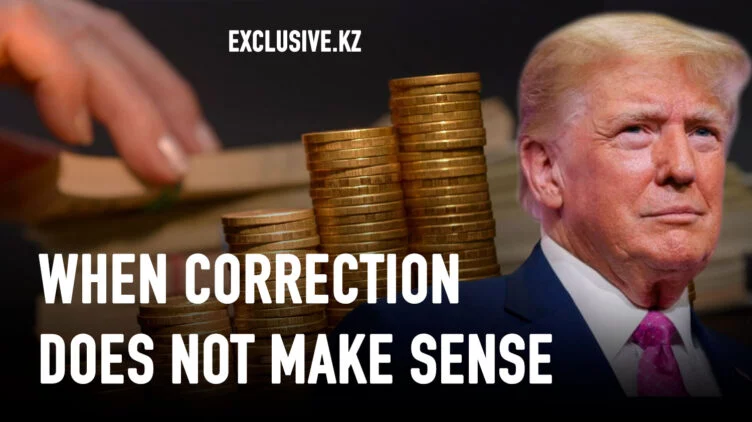Is Trump Right About Germany’s Surplus?

At 5.8% of GDP, Germany’s current-account surplus is formidable – and has long been the subject of considerable scrutiny. This was true when Barack Obama was US president, but the criticism has grown far more aggressive under Donald Trump. Now, Trump appears committed to forcing Germany to shrink its surplus, but his approach – and the logic behind it – is fundamentally flawed.
Trump blames America’s massive merchandise trade deficit – which has swelled to $1.2 trillion – for the decline of US manufacturing, reflected in the sector’s plummeting share of total employment, from around 20% in 1980 to just 8% in 2024. So, he wants to force countries running significant trade surpluses with the United States to change their ways. His weapon of choice, unveiled on April 2, is “reciprocal” tariffs, with rates determined by dividing the US trade deficit in goods with a given country by total goods imports from that country, and then dividing the result by two.
None of this makes sense. For starters, as the economist Paul Krugman explains, “correcting” trade imbalances will not change any of the wide range of factors – from productivity growth to automation – that have contributed to the decline of manufacturing across rich countries, including in those running surpluses, like Germany.
Moreover, America’s trade deficit partly reflects desirable forces – namely, large capital inflows. From Chinese purchases of US Treasury bills (traditionally viewed as a safe asset) to German, Japanese, and South Korean automakers building factories in the US, foreign capital pours into the US economy – an attractive place to invest. These capital inflows have produced a capital-account surplus that corresponds to the US trade deficit (the capital-account surplus equals the trade deficit, and the sum of the two equals zero). Capital inflows are beneficial to the US, not least because Americans do not save enough to sustain high levels of investment – essential to drive innovation and growth – without foreign capital.

Germany’s trade surplus reflects the opposite problem: high savings and low investment, by both the government and business. This reflects a policy choice. During former German Chancellor Angela Merkel’s 16 years in power, the government maintained strict fiscal discipline, with the federal budget being almost balanced every year, in a practice known as schwarze Null (black zero).
But Germany’s incoming government, led by Friedrich Merz, has already amended the country’s constitutional “debt brake,” thereby paving the way to run a larger federal budget deficit, and adopted a €1 trillion ($1.1 trillion) investment program, focused on defense and infrastructure. Since 30-40 cents of every additional euro the German government allocates to public investment is spent on imports, this is virtually guaranteed to shrink the country’s trade surplus – no tariffs needed.
Progress is also being made on the export side. After the 2008 global financial crisis, Germany’s exports to China tripled, causing its surplus to surge. In 2010-18, total German exports grew at an annual rate of 4.1%, with the country’s current-account surplus peaking at a whopping 8.9% of GDP in 2016. But China’s growth slowdown, together with tough competition from Chinese electric-vehicle and machinery suppliers, led to a decline in German exports in 2023-24. With these trends set to put further downward pressure on Germany’s trade surplus, US tariffs become even less justifiable.
There is one point, however, on which the Trump administration is not entirely wrong: Germany’s stellar export performance in 2010-18 was not entirely the product of free markets. In the early 2000s, Germany lowered its average income-tax rate to 44.3% (compared to its 1996 peak of 57%) and slashed its corporate-tax rate to 29.4% (compared to its 1995 peak of 56.8%), while raising its value-added tax from 16% to 19%. By making German exports cheaper, and imports more expensive, these taxes amounted to a “fiscal devaluation” – an alternative to currency devaluation, which is not available to members of a monetary union.
While boosting Germany’s external competitiveness was not the goal of these tax changes, which were designed to address domestic challenges, it was a key byproduct. So, when Peter Navarro, Trump’s senior counselor for trade and manufacturing, complains that Germany has “non-tariff barriers” in place, he is not entirely off base. Germany should own up to that, though it is worth noting that other European countries have probably paid a far higher price than the US has.
Still, none of this makes Trump’s tariffs justifiable, let alone necessary. While Germany’s trade surplus has been too big for too long, it is on track to shrink. America’s deficit, too, might decline – though, here, the Trump administration should be careful what it wishes for.
Copyright: Project Syndicate, 2025.





Все комментарии проходят предварительную модерацию редакцией и появляются не сразу.